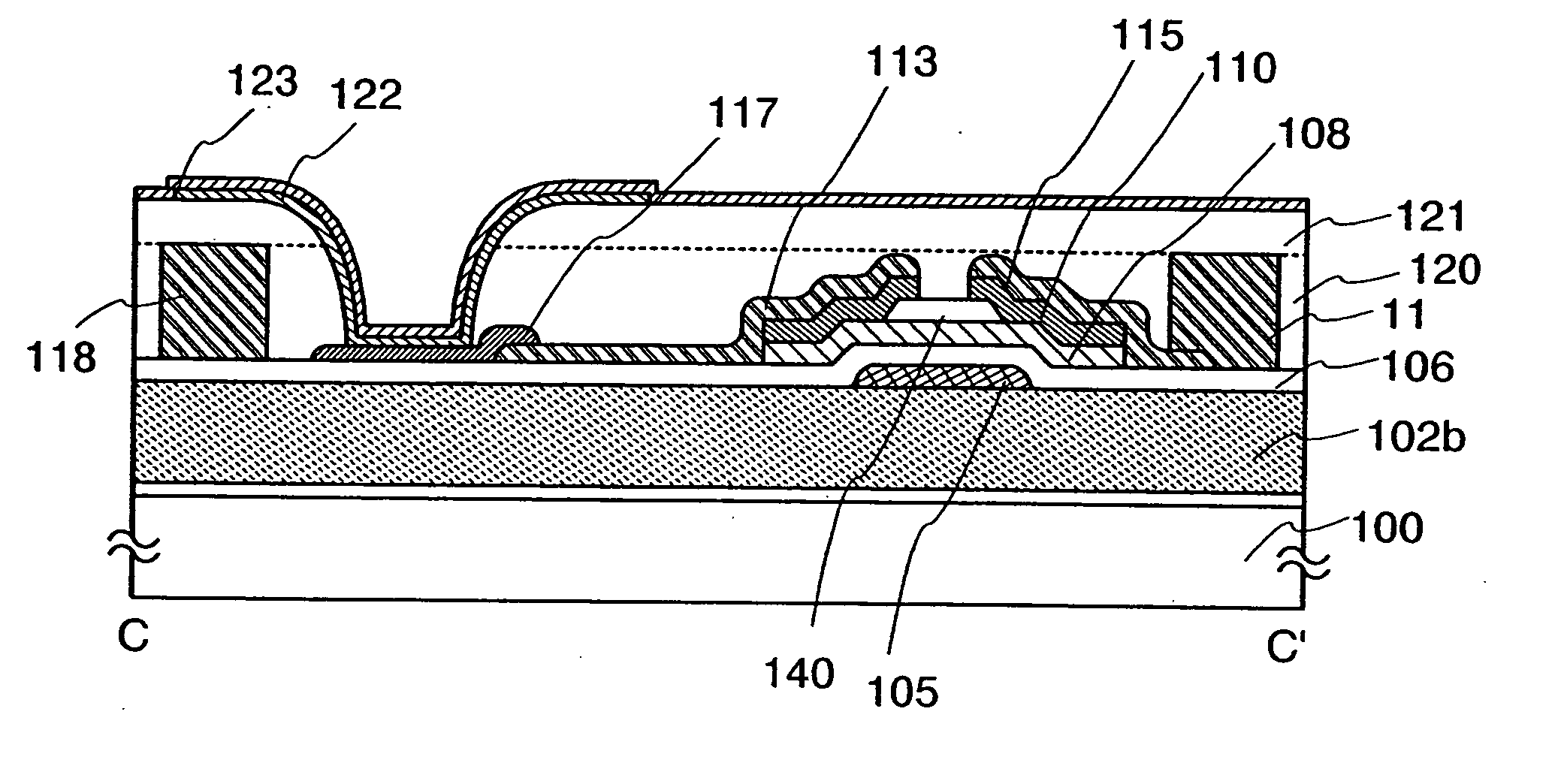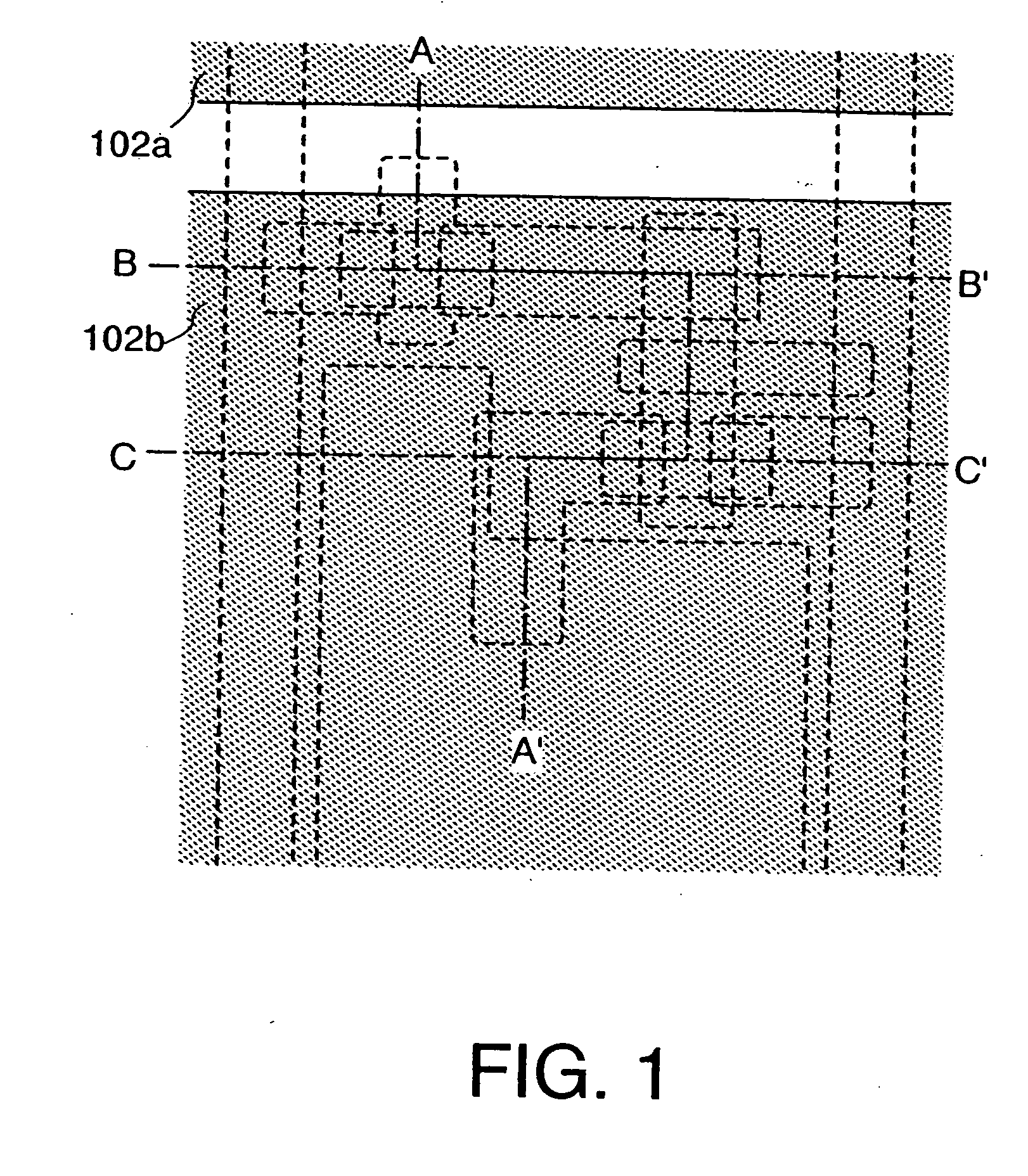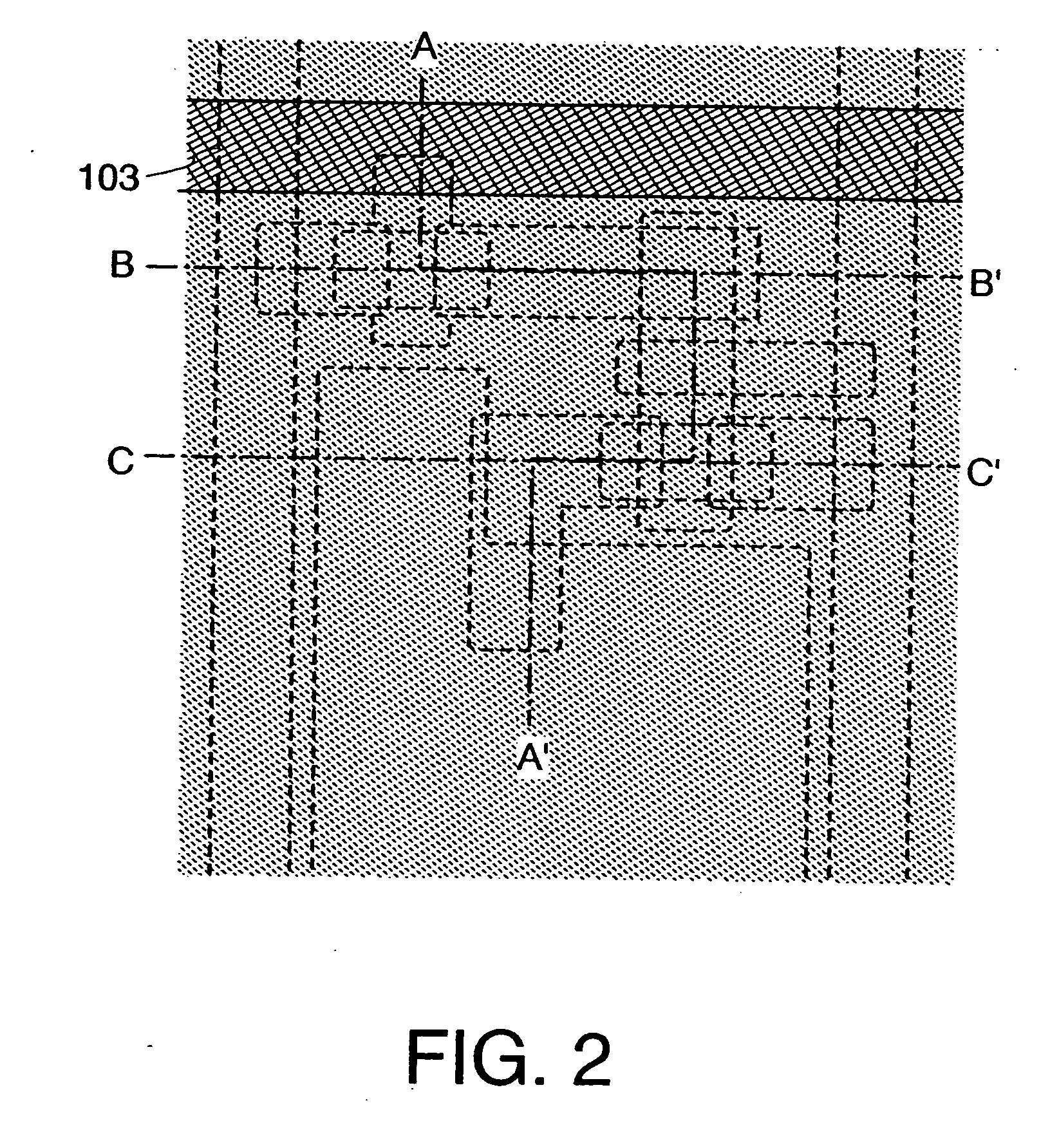Display device, method for manufacturing the same, and television apparatus
a technology for television equipment and display devices, which is applied in the field of display devices, can solve the problems of reducing the number of steps, affecting and inevitably increasing the manufacturing cost, and achieves the effects of improving the usability of materials, facilitating the manufacture of steps, and facilitating the use of light exposing equipmen
- Summary
- Abstract
- Description
- Claims
- Application Information
AI Technical Summary
Benefits of technology
Problems solved by technology
Method used
Image
Examples
embodiment mode 1
[0106] An embodiment mode of the present invention is described with reference to FIGS. 1 to 7 and FIGS. 16A to 23C. Specifically, a method for manufacturing a display device to which the present invention is applied is described. First, a method for manufacturing a display device having a channel etch thin film transistor to which the present invention is applied is described. FIGS. 1 to 7 correspond to FIGS. 16 to 22, respectively. FIGS. 1 to 7 are top views of a pixel portion of a display device. FIGS. 16A, 17A, 18A, 19A, 20A, 21A, and 22A are cross-sectional views taken along lines A-A′ in FIGS. 1 to 7, and FIGS. 16B, 17B, 18B, 19B, 20B, 21B, and 22B are cross sectional views taken along lines B-B′, and then, FIGS. 16C, 17C, 18C, 19C, 20C, 21C, and 22C are cross-sectional views taken along lines C-C′.
[0107] A base film 101 for improving adhesion is formed over a substrate 100 as base pretreatment. Then, insulating layers 102a and 102b are selectively formed as shown in FIG. 1 a...
embodiment mode 2
[0172] An embodiment mode of the present invention is described with reference to FIG. 8. This embodiment mode describes the case of using a channel protective thin film transistor as a thin film transistor in Embodiment Mode 1. Therefore, repetitive description of the same portion or a portion having a similar function is omitted. Note that FIG. 8 corresponds to a cross-sectional view of a channel etch thin film transistor in FIG. 23C.
[0173] An insulating layer 102b is formed over a substrate 100, and a gate wiring layer is formed by discharging a composition including a conductive material with a droplet discharge method. A gate electrode layer 105 is formed by a droplet discharge method to be in contact with the gate wiring layer. Subsequently, a gate insulating layer 106 is formed by using a plasma CVD method or a sputtering method to be a single layer or to have a laminated structure. A specifically preferable mode of the gate insulating layer corresponds to a lamination body ...
embodiment mode 3
[0181] This embodiment mode is different from the channel etch type thin film transistor manufactured in Embodiment Mode 1 in a connection structure with a first electrode layer, which is described with reference to FIG. 15.
[0182] Steps up to forming a source-drain electrode layer 113 are similar to those in Embodiment Mode 1. Next, a columnar conductive layer 144 to function as a pillar is formed. In this embodiment mode, conductive layers are laminated using a droplet discharge method to form the columnar conductive layer 144. The columnar conductive layer 144 may be formed either before or after the insulating layer 120 is formed. In the case of forming the insulating layer 120 earlier, a contact hole in which the columnar conductive layer 144 is to be formed can be formed together with an interlayer insulating film by selectively forming the insulating layer 120 with a droplet discharge method.
[0183] As another method, a material which repels the insulating layer 120 is discha...
PUM
 Login to View More
Login to View More Abstract
Description
Claims
Application Information
 Login to View More
Login to View More - R&D
- Intellectual Property
- Life Sciences
- Materials
- Tech Scout
- Unparalleled Data Quality
- Higher Quality Content
- 60% Fewer Hallucinations
Browse by: Latest US Patents, China's latest patents, Technical Efficacy Thesaurus, Application Domain, Technology Topic, Popular Technical Reports.
© 2025 PatSnap. All rights reserved.Legal|Privacy policy|Modern Slavery Act Transparency Statement|Sitemap|About US| Contact US: help@patsnap.com



